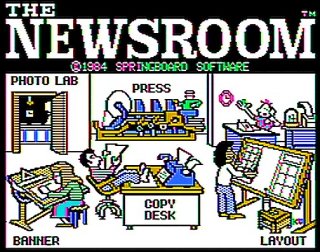This article is more than 1 year old
How I invented Desktop Publishing
Well, OK. Me, and a thousand others
The demo
This system had all the basic requirements of DTP that are so common today. It had a small, affordable microcomputer that fit on a desk top. The display accurately showed what would print, pixel for pixel - WYSIWYG. A mouse-like stylus allowed easy input and editing of graphics, and users could load and change their fonts on demand.
I first stumbled upon this combination when I was teaching a class in BASIC programming. At the end of the class, I created a nice diploma on the Apple II, with large graphic fonts and decorative borders. I signed the form, then I had each student sign their name with the stylus, and I printed it for them. This, as far as I know, was the first DTP document, and I didn't even save a single copy. I had no idea it was a breakthrough.
But my Apple representative did. We rarely had a visit from our Apple rep, as we were far away in the middle of nowhere. Usually the rep would only visit once every three months. One day the rep visited, and I was always ready to show my killer demos. I demonstrated the certificate and how it could be signed and printed. He loved it.
Surprisingly, the next week the same rep showed up with another Apple regional executive, and asked to see the demo again. He took copious notes. The next monthly Apple dealer newsletter had a detailed description of my demo, without attribution. The entire Apple dealer network was taught the concept of DTP.
But this system was very expensive. A basic Apple II system with Graphics Tablet and printer could cost nearly $5000, equivalent to over $14,000 in 2010 dollars. The software was difficult to use, requiring high levels of technical skill to integrate features that weren't designed to work together (like the fonts).
Soon, commercial software developers would create programs specifically dedicated to the task of DTP. Springboard Software's The Newsroom application was released in 1984, just as the first Macintosh was released. This was the moment when DTP moved from homebrew hackers to professional software developers.


When the Macintosh shipped, it was designed for graphics. Apple established itself as a standard of DTP; its system software was designed for use with Adobe's PostScript laser printer. But it would not be until 1987 when the Mac II with a color display shipped, finally surpassing the humble Apple II in graphics capabilities.
So who invented Desktop Publishing?
Maybe I did, and didn't realize it. Maybe it was Todd Rundgren. But surely this was a technology waiting to be invented, discovered by multiple people at the same time.
The demand was there - hackers toyed with the idea just for their personal use. These experiments showed the way for Apple and Adobe, and many others, to create the modern multi-billion dollar publishing industry we take for granted today. It didn't even exist 30 years ago.
Unfortunately, Apple never understood how to market DTP. Its application was immediate and obvious, but they rebranded it as "Desktop Media" and ran a notorious "Helocar" advertising campaign. It was Apple's first well-publicized flop. DTP was Apple's killer application, and it almost killed the company. I'll describe this in more detail in my next installment of Mac history from the trenches. ®
Charles Eicher is an artist and multimedia producer in the American Midwest. He has a special interest in intellectual property rights in the Arts and Humanities. He writes at the Disinfotainment weblog.
